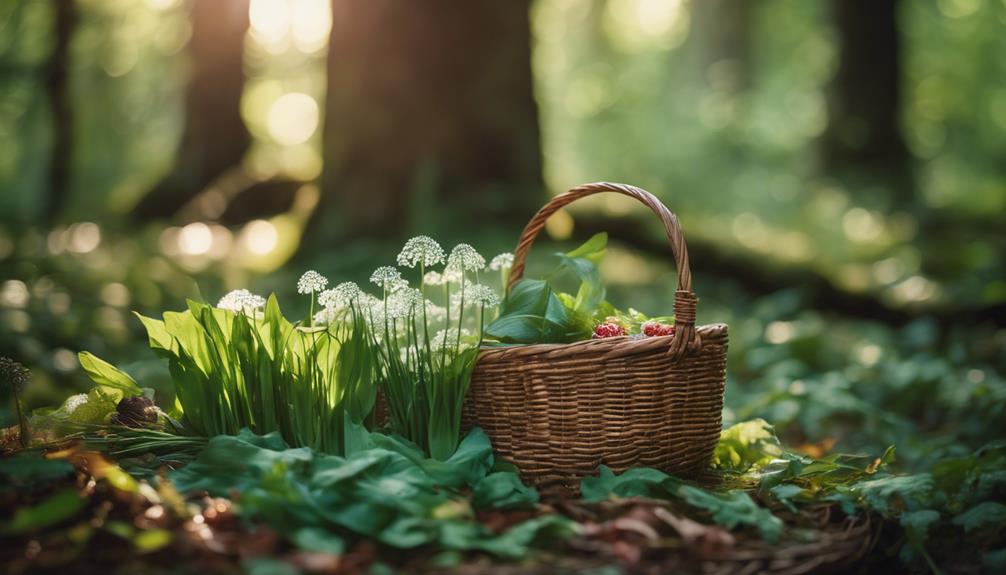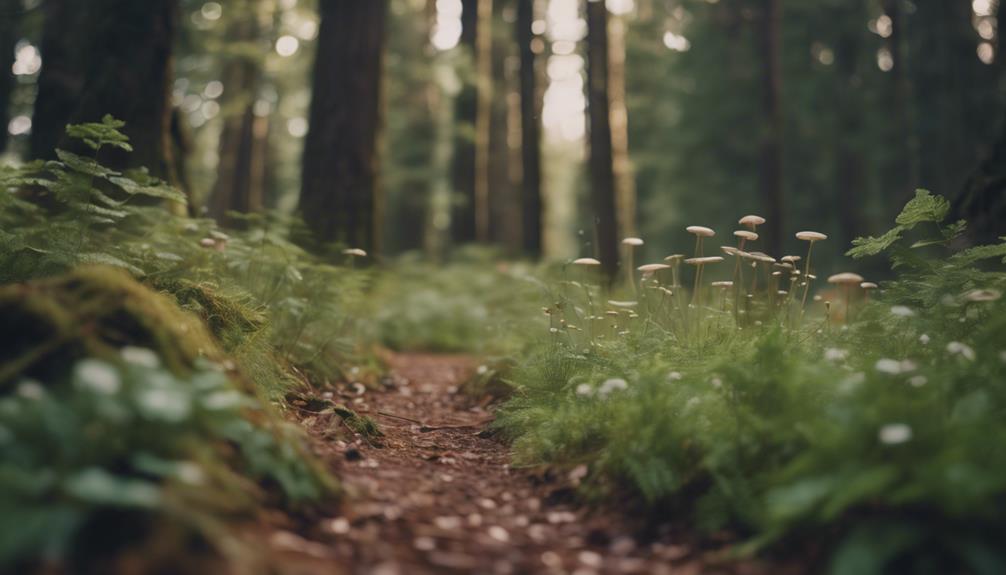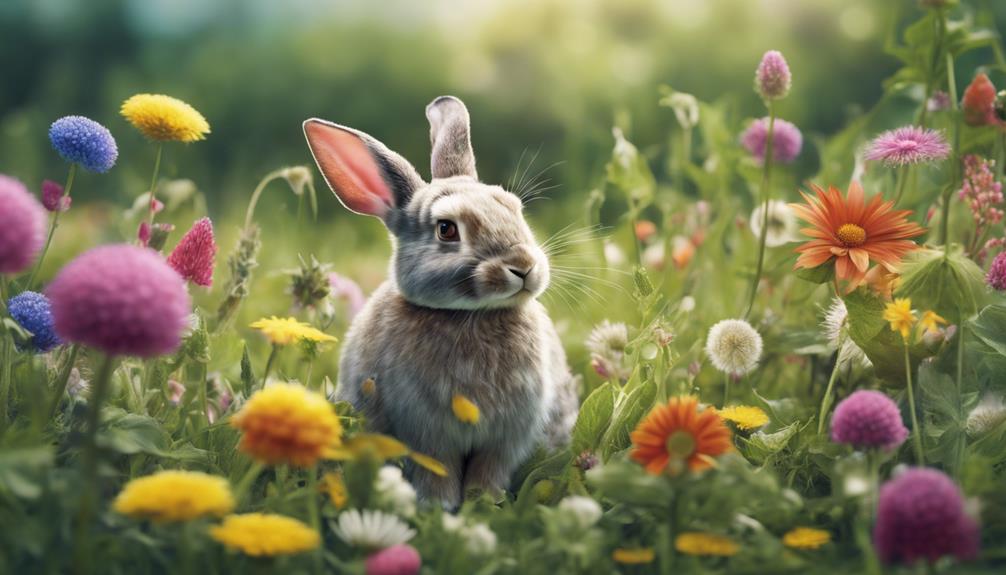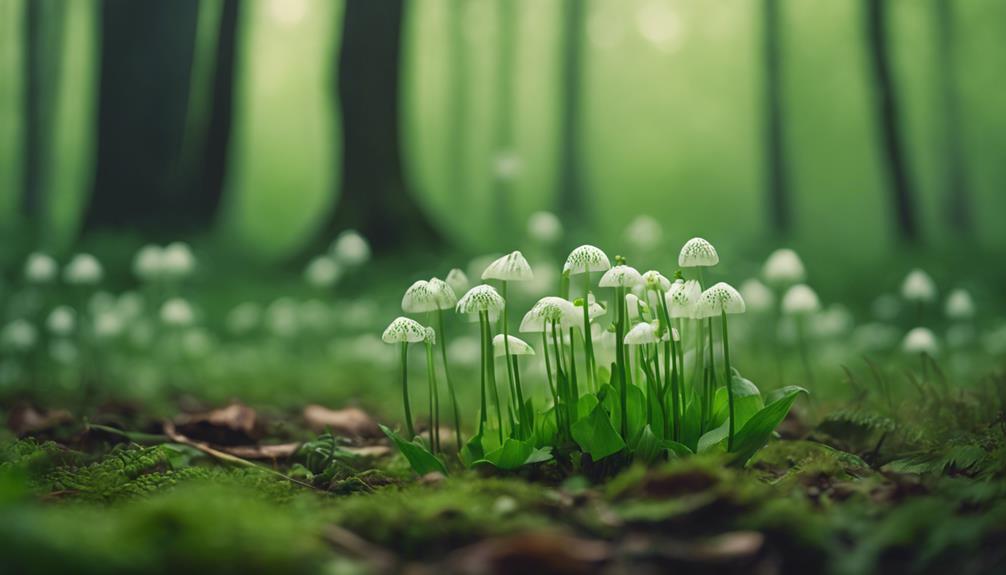You can forage in the New Forest, where the woods yield a seasonal bounty of wild edibles, including blackberries, apples, mushrooms, and nuts, waiting to be discovered and transformed into fresh, flavorful meals. With the right knowledge and guidance, you'll uncover the forest's secrets and enjoy sustainable foraging practices that preserve the environment. From identifying edible species to cooking with wild foods, the New Forest caters to both seasoned foragers and beginners. By adopting best practices, you'll not only gather fresh ingredients but also foster a deeper connection with nature – and there's more to explore in the world of New Forest foraging.
Key Takeaways
- The New Forest offers a variety of seasonal delights for foraging, including blackberries, apples, mushrooms, and nuts.
- Having the right knowledge and guidance is crucial for uncovering the forest's secrets and foraging safely.
- Sustainable foraging practices, such as taking only what is needed and leaving no trace, ensure resources for future generations.
- Proper plant identification is essential to gather edible species and avoid toxic ones, making a reliable field guide a must-have.
- The New Forest caters to both seasoned foragers and beginners, providing fresh and flavorful ingredients for cooking.
Getting Started With New Forest Foraging
As you venture into the New Forest, you'll discover a treasure trove of seasonal delights waiting to be foraged, from luscious blackberries to crunchy apples, earthy mushrooms, and crunchy nuts.
The New Forest is a haven for wild edibles, offering a diverse range of flavors and textures to explore. As a beginner, it's crucial to start with what's in season, and the New Forest has plenty to offer. From summer's juicy blackberries to autumn's earthy mushrooms, each season brings new opportunities to forage.
With the right knowledge and guidance, you can uncover the forest's secrets and enjoy the freshest, most flavorful ingredients in your cooking. Whether you're a seasoned forager or just starting out, the New Forest has something for everyone.
Sustainable Foraging Practices Matter

You'll need to adopt sustainable foraging practices to guarantee the New Forest's rich bounty remains available for generations to come. This means being mindful of your impact on the environment and respecting the natural ecosystem.
As you venture into the forest, remember that sustainable foraging is about more than just gathering wild foods like blackberries, apples, and mushrooms. It's about doing so in a way that promotes the long-term availability of these resources.
You'll need to be knowledgeable about plant identification to make sure you're gathering edible species and avoiding toxic ones. Only take what you need, leaving no trace behind, and respect wildlife habitats in the forest.
This approach not only preserves the environment but also fosters a deeper connection with nature. By adopting sustainable foraging practices, you'll be able to enjoy the forest's bounty while promoting its health and longevity.
Top Wild Foods and Medicinal Herbs

As you explore the New Forest, you'll discover a treasure trove of wild foods and medicinal herbs waiting to be foraged.
From the rich flavors of wild mushrooms to the nutritional benefits of medicinal plants, you'll learn how to identify and harvest the best of the forest's bounty.
In this section, you'll explore the top wild foods and medicinal herbs, including wild mushroom varieties, medicinal plant profiles, and the berry bounty bonanza that awaits you.
Wild Mushroom Varieties
When foraging in the New Forest's woodland floors and glades, you'll uncover a diverse array of wild mushroom varieties, from the prized penny bun and chanterelle to the earthy-tasting porcini and chicken of the woods.
These wild mushrooms offer a range of flavors and textures, from earthy and nutty to fruity and apricot-like. Some, like the chanterelle, have a fruity, apricot-like aroma, while others, like the porcini, have a rich, earthy flavor.
As you forage, remember to exercise caution, as some wild mushrooms can be poisonous. Having knowledge about mushroom identification is crucial to distinguish between edible and harmful varieties. With proper identification, you can enjoy the unique flavors and potential health benefits of these wild mushrooms.
Whether you're a seasoned forager or just starting out, the New Forest offers a rewarding experience, allowing you to connect with nature and discover new ingredients for cooking.
Medicinal Plant Profiles
Among the New Forest's top wild foods and medicinal herbs, blackberries, apples, and linden leaves stand out for their accessibility and versatility in cooking and natural remedies.
You can incorporate these wild edibles into your meals, not only to add unique flavors but also to tap into their potential health benefits. For instance, linden leaves have been used in herbal medicine for centuries to soothe digestive issues and promote relaxation. Blackberries, rich in antioxidants and fiber, make a delicious and nutritious addition to oatmeal or yogurt. Apples, a classic foraging find, can be enjoyed fresh or used in pies and jams.
When foraging for medicinal herbs in the New Forest, it's important to follow sustainable harvesting practices to promote the long-term health of the ecosystem. Proper identification is also vital to avoid mistakenly consuming lookalike plants.
As you explore the forest, keep an eye out for these easily identifiable species, and start experimenting with their culinary and medicinal uses. With a little practice and patience, you'll be enjoying the flavors and benefits of wild foods and herbal medicine in no time.
Berry Bounty Bonanza
You're now ready to explore the New Forest's berry bounty, where blackberries, apples, and other seasonal treats await discovery. As a beginner forager, you'll find these wild foods easy to identify and rich in nutrients. Blackberries, for instance, are packed with antioxidants and fiber, making them a delicious and healthy snack.
Apples, another common find, are a great source of fiber and vitamins. When foraging for berries, remember to avoid unripe or moldy fruits, and always wash them before consumption.
In addition to berries, the New Forest offers other seasonal foraging opportunities, including mushrooms and nuts. If you're new to foraging, consider joining a guided event, like the fungi foraging experience offered by Hotel du Vin in Poole. Their educational seminars, led by expert foragers, will teach you how to identify edible mushrooms and avoid poisonous lookalikes.
Afterward, indulge in their mushroom-themed culinary experiences, complete with wine pairings. With the right knowledge and skills, you'll be enjoying the New Forest's wild foods in no time!
Essential Tools for Successful Foraging

As you prepare for your foraging adventure in the New Forest, you'll want to make sure you have the right tools to guarantee a successful and safe experience.
You'll need a reliable field guide to help you identify the plants you find, as well as a sturdy basket or bag to collect your finds.
With these essentials in hand, you'll be well-equipped to start your foraging journey.
Field Guides Matter
With a reliable field guide in hand, you'll be better equipped to navigate the New Forest's diverse flora and make informed decisions about what to forage. Field guides are essential for successful foraging adventures in the New Forest. They provide detailed information on plant identification, habitat, and potential uses.
Trustworthy and thorough field guides help you avoid toxic plants and identify edible species. Top picks for field guides include books specifically tailored to the region's flora and fauna. Utilizing field guides enhances the foraging experience and promotes safe and sustainable practices.
Basket and Bags
Having a reliable foraging companion, the trusty basket or bag, plays a crucial role in successful New Forest foraging expeditions. As you venture into the woods, you'll need a way to carry your bounty of wild plants.
When selecting a basket or bag, consider the following factors:
- A basket with a wide opening makes it easy to access your finds
- Bags with multiple compartments help you organize different types of wild plants
- Durable materials can withstand outdoor conditions
- Choose a size and weight that's comfortable to carry during your foraging trips
Having the right basket or bag can make all the difference in your foraging adventure. It's important to have a reliable companion to carry your harvested goods, allowing you to focus on finding the best wild plants the New Forest has to offer.
Wild Foods Recipes and Ideas

Discover the flavors of the New Forest by incorporating its wild bounty into your culinary creations. You'll be amazed at the delicious dishes you can whip up using the forest's natural ingredients.
Try making a delicious blackberry crumble with freshly foraged blackberries from the New Forest. The sweetness of the blackberries pairs perfectly with the crunch of a homemade crumble topping.
Experiment with an apple and nut salad using seasonal apples and nuts found in the forest. The combination of crisp apples and crunchy nuts is a perfect snack for your forest foraging adventure.
Get creative with wild mushrooms and create a hearty mushroom soup or infuse flavors with a wild mushroom risotto featuring a variety of mushrooms gathered in the forest.
If you're looking for a quick energy boost, enjoy a foraged nut and berry trail mix as a nutritious snack. The New Forest is full of edible plants waiting to be discovered and devoured.
From sweet treats to savory meals, the forest's wild bounty is sure to inspire your culinary creativity.
Foraging Safety and Best Practices

As you venture into the New Forest to forage, it's important that you prioritize safety and adopt best practices to guarantee a fun and responsible foraging experience. Remember, foraging in the New Forest requires knowledge of plant identification to avoid toxic species and secure safe gathering.
To secure a safe and successful foraging experience, keep the following best practices in mind:
- Familiarize yourself with native plants to avoid mistaking them for edible species.
- Practice sustainable wildcrafting techniques to preserve the ecosystem.
- Be cautious of poisonous plants like hemlock and yew that can be found in the New Forest.
- Understand the seasonal availability of foraged items like blackberries, apples, mushrooms, and nuts.
Frequently Asked Questions
Are You Allowed to Forage in the New Forest?
You're wondering if you're allowed to forage in the New Forest, and the answer is yes, you can, as long as you do it sustainably and respectfully, following guidelines and being mindful of the environment and wildlife.
Where Not to Forage?
You shouldn't forage on private land without permission, in Special Areas of Conservation, or in Sites of Special Scientific Interest (SSSIs), as these areas are protected to preserve biodiversity and ecosystems.
In What States Is Foraging Illegal?
You'll find that foraging is illegal in certain states, like Oregon and Washington, to protect native plants and wildlife, so it's important you check local regulations before foraging to avoid fines or legal trouble.
Where Is It Safe to Forage?
You'll find safe foraging spots in national parks, forests, and private lands with owner permission. Research local regulations and guidelines beforehand, and consider joining guided foraging tours or workshops to guarantee a safe and enjoyable experience.
Conclusion
As you venture into the New Forest, remember the old adage 'take nothing, leave nothing' to guarantee sustainable foraging practices.
With the right tools and knowledge, you'll be feasting on wild delicacies in no time.
Just recall the importance of safety and responsible harvesting to preserve this precious resource for future generations. It is crucial to implement sustainable practices and respect the environment while enjoying the natural bounty it provides. Understanding how forage harvesters function can help ensure efficiency and minimize waste during the harvesting process, contributing to long-term sustainability. By using technology and knowledge wisely, we can meet current needs without compromising the ability of future generations to do the same. Additionally, educating ourselves and others on **how forage harvesters work** can optimize their use, reducing unnecessary environmental impact and fostering eco-friendly practices. By incorporating these advanced tools responsibly, we can maximize yield while minimizing the depletion of natural ecosystems. Ultimately, balancing innovation with conservation is key to creating a sustainable future for all.
Happy foraging!










